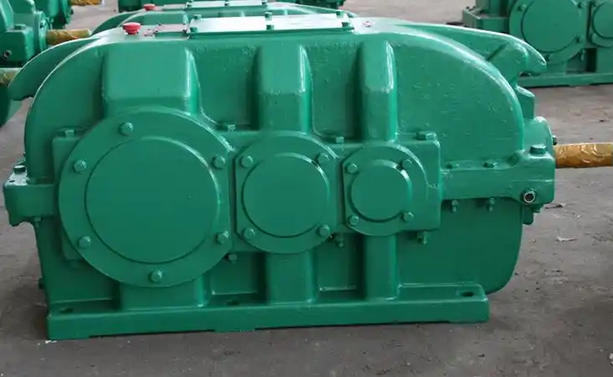Why should the temperature of the heating and drying method be controlled at 60-80 ℃ when drying the interior of the DCY gear reducer
The heating and drying temperature of DCY gear reducer is controlled at 60-80 ℃, which is a scientific range based on the characteristics of its core components such as internal lubricating oil, seals, metal structural components, and drying efficiency. It can efficiently remove internal moisture and avoid damage to the equipment during the drying process. The specific reasons are as follows:
Ensure stable performance of lubricating oil: The gear oil and grease inside the DCY reducer have a specific thermal stability range. When the temperature is below 60 ℃, the evaporation rate of internal moisture is extremely slow, the drying cycle will be greatly extended, and the flowability of lubricating oil is poor, making it difficult for the moisture attached to the surface of the parts to completely detach; After the temperature exceeds 80 ℃, lubricating oil is prone to oxidation and deterioration, which not only reduces viscosity but may also generate impurities such as oil sludge, damaging the lubricating protective oil film of gears and bearings. Subsequent equipment operation will exacerbate wear, seriously affecting transmission accuracy and component life. The temperature range of 60-80 ℃ can maintain good fluidity of lubricating oil, assist in moisture evaporation, and prevent it from deteriorating.
The joint surface and shaft end of the DCY reducer are usually equipped with rubber or polyurethane seals. This type of seal has limited heat resistance. If the drying temperature is too high, it will accelerate its aging, hardening, and even cracking, leading to seal failure and oil leakage during subsequent operation of the equipment. The temperature range of 60-80 ℃ will not exceed the tolerance range of conventional seals, which can effectively protect the integrity of the sealing structure.

Preventing deformation and cracking of metal components: Although the casing, gear shaft, and other metal structural components of this reducer have a certain degree of heat resistance, if the temperature is too high during heating and drying, the difference in thermal expansion coefficients between different components will be amplified. For example, the fitting parts between the box and the planetary carrier, the bearing seat and the shaft sleeve, etc. may experience changes in fitting clearance due to different degrees of thermal expansion and contraction, and even slight deformation may occur; If the temperature suddenly rises or drops, it may also generate internal stress, which can lead to component cracking in severe cases. 60-80 ℃ belongs to the mild heating range, which can reduce the risk of thermal deformation of metal parts, and at the same time fit the temperature range during normal operation (the working environment temperature of DCY reducer is mostly -40-45 ℃), without affecting the performance of metal materials.
Protection of insulation related components (including motor linkage structure): Some DCY reducers are integrated with the motor for installation, and the insulation materials related to the motor have clear heat resistance limitations. If the drying temperature is too high, it will damage the insulation performance of the insulation layer and may cause faults such as motor short circuits. The low-temperature drying method of 60-80 ℃ can avoid the aging and failure of the insulation layer, ensuring the overall electrical safety of the equipment. This is also the general safe temperature range for drying motor related equipment in industry.

